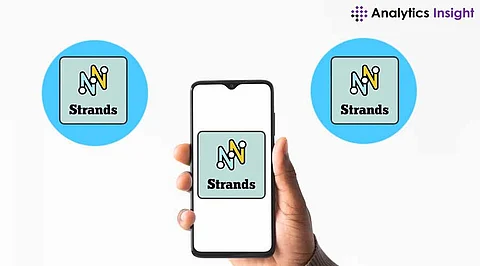

In a world that constantly craves mental stimulation, puzzles stand as timeless sources of entertainment and intellectual exercise. The New York Times, renowned for its mastery of both print journalism and puzzles, has once again captivated its loyal audience. This time, it’s with Strands—a vibrant and innovative addition to its celebrated puzzle portfolio.
A step forward from the crosswords and word searches of yesteryears, NYT Strands represents a fresh approach to word-based games, blending challenge, creativity, and addictive fun. Read on to know today’s answers, hints and help!
Strands is a newly developed word puzzle game from The New York Times to attract both hardcore word game enthusiasts and casual game players. Unlike conventional word searches, this puzzle brings a delightful twist: players have to search for connected words from a daily topic on a shifting letter board. Curious in its game mechanics, the game relies heavily on skill and racing against the clock, simulating a deeper engagement with language for the solver.
In other words, on the grid, the words related to the particular day’s theme can be shuffled, giving it a unique angle at one’s whims.
Here’s how the game works:
1. The Grid: The puzzle begins with a grid of letters, typically 6x6 or 7x7, arranged like a traditional word search.
2. The Theme: Each puzzle is anchored around a specific daily theme or hint, which players must use to identify words hidden in the grid.
3. Connections: Unlike standard word searches, Strands often requires players to connect letters in any direction—horizontally, vertically, diagonally, or even in zigzag patterns—to form valid words.
4. Spangram: Adding an extra layer of excitement, every Strand's puzzle contains a spangram—a word or phrase that ties directly to the puzzle’s theme and spans multiple sections of the grid.
The challenge? Understanding the theme and analysing the words without omitting the key spangram. It is a kind of mental journey that requires maximal attention to every passed turn.
Hint: These are words used to identify types.
Don’t worry if the theme looks a little daunting now. Keep on reading to know our explained version of NYT Strands theme for December 17
These are the words used to describe literary genres.
Spotting the Spangram in NYT Strands can be tricky, but with a few smart strategies, you can improve your game and find it faster! Here’s how:
1. Focus on the Theme: The Spangram always ties directly to the puzzle’s theme. Think about keywords or phrases related to the hint provided.
2. Look for Long Connections: Unlike other words in the grid, the Spangram spans multiple rows, columns, or directions. It usually winds across a significant portion of the board.
3. Scan Strategically: Start from prominent letters that could form part of a central word and mentally connect them through the grid.
4. Spot Unused Letters Often, letters not included in smaller words are part of the Spangram. Keep an eye on letters that seem “left out.”
5. Think Beyond Straight Lines : The Spangram isn’t always linear—it can zigzag, curve, or take unexpected turns. Be flexible when tracing paths.
NYT Strands Spangram direction is horizontal.
Spangram answer for December 17 NYT Strands: FictionGenre.
Looking at the explanation above, one can easily point out that the game of Strands is more fun than a challenge. The puzzles themselves are consumable pieces of gameplay that can be played anytime. However, the excitement of finding a word—and especially the spangram—keeps players’ coming back for more.
Just as with Wordle taking the global community by storm, Strands stimulates the two key human traits: recognition of language constants and patterns. It provides a refreshing deviation from ordinary existences, as well as revs up the mind.
1. Crime
2. Fantasy
3. Romance
4. FictionGenre
5. Western
6. Historical
In essence, through Strands, The New York Times carves itself once again as the innovator of puzzles. The game perfectly integrates into the rest of the NYT puzzle world and fits perfectly into such famous ones as Mini Crossword or Spelling Bee. While word games progressed Strands made a new creative record, engaging and with themes significantly deeper.
In the days to come, Strands will be a member of the list of puzzle manufacturers and sellers. It evidences some of the quintessential qualities of modern wordplay like being informative, dynamic, social and fascinating. For the people who like to challenge themselves and look for words every morning, Strands is not only entertainment but an opportunity to find out something new.
So, whether a solver tackles Strands over morning coffee or late-night brainstorming, one thing is certain: The puzzle means daily contact, contemplation, and victory.
